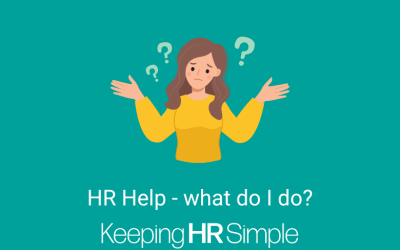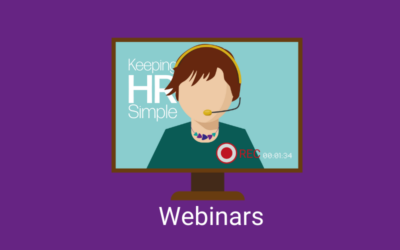Preparing for a disciplinary hearing
- Prepare your “case”, i.e. the reasons why the employee is being taken to disciplinary hearing. You can suspend an employee if it is appropriate depending on the case. If you feel the employee could tamper with evidence, intimidate other employees or there are health and safety issues, you can suspend them on full pay whilst the case is being dealt with. Suspension is not a sanction, so it is best to let the employee know this.
- Gather evidence; take statements, get copies of any written evidence such as emails, internal documents, correspondence, text messages
- Prepare an agenda for the meeting
- Invite the employee in writing to the disciplinary:
- Give them at least 48 hours notice
- Explain the reason/s for the hearing
- Enclose/attach copies of the evidence you’ll be referring to
- Explain the potential outcome, i.e. that you may take disciplinary action against them, up to and including dismissal (if it’s a serious issue)
- Allow them to be accompanied at the meeting (by a suitable colleague or qualified Trade Union Representative)
Make sure you take notes, have a note taker present or request permission from the employee to audio record the meeting. Make sure they sign a recording permission form which outlines what they can and cannot do with the recording.
A copy of any notes or recording should be provided to the employee after the disciplinary hearing. It is down to the employer’s discretion is they allow an employee to record a meeting on their phone. (Best to add into disciplinary procedure that employees cannot record meetings) If the employee secretly records, this could be seen as misconduct if it is written in the company policy.
Conducting a hearing
It’s important to consider the hearing as a way of establishing what went on. It shouldn’t become a debate, discussion or argument and it’s important to be as impartial as possible. The golden rule is innocent until proven otherwise and anyone hearing a disciplinary matter needs to take that view. You are there to put to the employee what you believe to be the issue or the reason for concern over their behaviour without making any judgements. You should speak without being interrupted and if you find that the employee does interrupt, ask them to wait until you’ve finished speaking.
The employee then has the opportunity to speak without being interrupted so you should fully listen to what they say. You then have the chance to ask any questions you might want to ask them to clarify what they’ve said, ask them to repeat a particular statement or to explain what they meant by a point they mentioned.
It is difficult at times not to react but it’s important to be professional at all times and if you find yourself getting angry or emotional in any way, consider taking a short break. Any disciplinary action taken could be challenged if the person taking the hearing is considered not to be impartial so it’s essential to stay as professional as possible and to approach the meeting with an open mind, taking the view that no outcome has been decided until you’ve heard the employee’s side of what happened.
The role of a companion
The employee has the legal right to be accompanied during a disciplinary or appeal hearing. If they do bring someone with them, it’s important to understand that person’s role.
Companions are allowed to address the hearing on the person’s behalf (as long as the person wants them to), and can put forward a response to a view expressed during the meeting, but cannot answer questions asked of the employee, or do anything to prevent the employer putting forward their case.
They are also allowed to confer with the employee during the hearing.
Hearing Agenda
- Introduce all present
- If the employee has brought a companion, explain that the role of the companion is:
- to put the employee’s case; sum up their case; and respond on their behalf to any view expressed at the hearing.
- He/she will also be allowed to confer with the employee during the hearing.
- However, he/she will not be able to answer questions on their behalf.
- If the employee hasn’t brought anyone, ask them if they understood that they could have brought someone with them and ask them to confirm that they’ve chosen not to.
- Explain that a recording will be made OR notes will be taken as a record of the meeting and that a copy of the recording or notes will be available to the employee after the meeting
- Go through the reasons for the hearing, i.e. the Company has concerns about behaviour or issues that have arisen and the hearing is a chance for the Company to put those concerns to the employee and for him/her to have a chance to respond
- Explain that the Company will first go through their side of the story and the employee can then respond
- Go through the concerns, referring to evidence/witness statements where relevant
- Ask the employee for their comments – if necessary, they should comment on each separate piece of evidence
- Ask any questions of clarification of the employee
- Summarise what the employee has said
- Tell the employee that you will not be making a decision today but that decision will be communicated to them as soon as possible and they will also receive confirmation in writing of the outcome
- Close the hearing
Making a decision:
Making a decision will very much depend on the issue being dealt with, events of the disciplinary, the time and logistics you have available. It is possible to adjourn the meeting for sufficient time to reasonably consider the information gathered at the disciplinary meeting. Then reconvene the meeting to deliver your decision.
It is normal practice to conclude the disciplinary meeting, have your deliberations and then provide your decision in writing as soon after the hearing as reasonably possible i.e. the next day.
Following up after the hearing
- After the meeting, prepare a copy of the meeting notes / recording and issue to the employee enclosed with your decision in writing were possible. The employee is entitled to make factual corrections to these notes.
- Make a decision on the outcome of the meeting, the options are:
- No action (employee did not understand what was expected of them or there was no case to answer)
- Recorded verbal warning (first offence or the issue was not serious enough to warrant a written warning – verbal warning to go on the record for a specified period of time, usually 6 months)
- First written warning (first semi-serious offence, reoccurrence of previous offence, etc – first written warning usually expires after a period of 12 months)
- Final written warning (serious offence but not serious enough to warrant dismissal, repeat occurrence of previous offences – final written warning usually expires after a period of 2 years)
- Dismissal or action short of dismissal (contract may be terminated with notice or employee may be demoted, for example, if the contract allows for it)
- Demotion can be used as a sanction if it is stated in the employee’s contract, if not – this can be a breach of contract. It can also be used as an alternative to dismissal at the employer’s discretion. It can only be an alternative if both parties agree to the demotion.
- A warning/s which are already on an employee’s record.
If an employee has a warning on their record it is permitted to add this to your considerations. However, the validity of this warning will depend on the relevance to the current issue:
a. Are they the same or completely different issues.
b. Has the behaviour /conduct / performance of the employee been
poor, good, excellent since their last disciplinary.
If the employee has improved significantly whilst the warning remains
on their record, it is reasonable to say the severity of this cumulative
warning is diminished by that that good behaviour.
c. Is the behaviour / conduct / performance of the employee is
connected or relevant to the current issue, the disciplinary is shortly
after the warning currently on their record and if they have shown little
improvement, it is reasonable to say the current warning has a greater
cumulative bearing on the outcome of your decision.
d. The amount of time that has passed from a previous warning. Reasonable time periods are 6 months for a first warning and 12 months for a final warning. These can be longer or shorter if appropriate.
- Confirm your decision in writing to the employee
- Allow the employee to appeal against your decision if he/she wishes to do so
Gross misconduct
After the disciplinary hearing, if it is concluded that the employee is guilty of gross misconduct, the employee would be dismissed without notice. The disciplinary hearing process must be followed before dismissing without notice.
Appeals
Some of reasons for an employ to appeal the final decision are:
- If the employee feels the sanction is too severe and deemed unfair
- There was a defect in previous hearings
- There is new evidence that wasn’t heard in previous hearings.
If an employee wishes to appeal against a disciplinary decision, he/she needs to put in writing the grounds for their appeal. You should:
- Hold an appeal hearing meeting
- Wherever possible, ask a different Manager to hear the appeal
- Make a final decision and communicate that decision to the employee in writing
- Confirm that the decision is final and no further appeals will be heard
- If a dismissal is turned over by appeal, the company MUST back pay the employee from date of dismissal to the date they are re-instated. Continuous service must also be continued.
Reasons to stop the hearing
There are occasions when it may be appropriate to stop the hearing. If any of the following arise, you should consider stopping proceedings (even if it’s to take a short break):
- Employee gets very upset or agitated. Take a short break and ask them to go out to compose themselves and come back in;
- Employee raises a grievance. If an employee raises a grievance during a disciplinary hearing, that will normally take precedence over the disciplinary proceedings. Consider whether or not to stop the meeting based on the employee’s comments, the seriousness of the grievance and whether or not it will require further investigation;
- Matters come to light which need further investigation. It can happen that an employee raises points you were not aware of and you need to investigate further. If possible, put the hearing on hold while you verify the information but if it’s not possible to verify or investigate straight away, you may need to postpone the hearing pending further investigation;
- It becomes clear that there is no disciplinary case to answer. If that happens, you can bring the hearing to a close and verbally inform the employee that no further action will be taken. This decision needs to be confirmed in writing.


